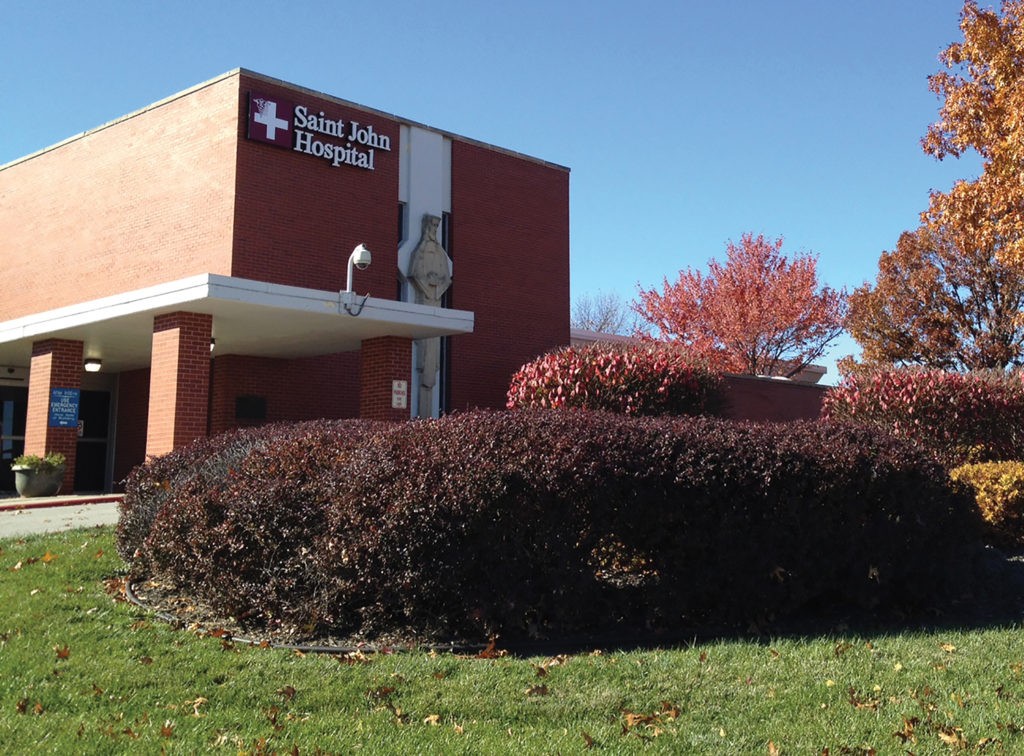Patient Safety Is Everyone’s Job

Healthy Kansas City magazine strives to be the place where the medical community and consumers alike come to gain awareness and learn to move healthcare forward, together. Often, we have to face hard topics without shying away from areas of deficit while at the same time never diminishing huge strides. March 10-16, 2019 is Patient Safety Awareness Week and provides the perfect platform to address the topic as a shared responsibility.
Small Step, Big Beginnings
The focus on patient safety and quality improvement are not new to us. They have, in fact, been at the forefront of medicine since Florence Nightingale first used evidence-based quality improvement to reduce preventable harm during the Crimean War. This was the first known use of the term “preventable harm” and put a name to the newly recognized concern.
In 1910, Dr. Ernest Codman, a physician from Harvard Medical School and Massachusetts General Hospital asserted that understanding why treatments were unsuccessful was the foundation for improving the care of future patients and came to be considered the founder of evidence-based medicine. That same year he co-founded the American College of Surgeons and formed a “Committee for Hospital Standardization”, the first known effort to standardize care within the hospital environment. This monumental step has become a foundation for future quality improvement and patient safety measures today.
Safety and Care Today
Patient safety is an essential and vital component of quality care. Yet health care providers throughout history have faced many challenges in the healthcare environment in trying to keep patients safe. By nature, the provision of healthcare requires a vast network of dedicated individuals performing innumerable processes which provide ample room for error. Unfortunately, errors do happen.
Healthcare is an intricate system including a huge variety of stakeholders including society in general; patients; individual nurses; nursing educators, administrators and researchers; physicians; governments and legislative bodies; professional associations; and accrediting agencies, pharmaceutical companies and more. All of these in some way, are responsible for ensuring that patient care is safely delivered and that no harm occurs to patients. Yet, the patient may be adversely affected by decisions or errors whose root is at any one or more of these entities.
The results are as complex as they are concerning. For example “Manufacturers are required to notify the FDA of quality problems; however, drug shortages or discontinuations are often caused by a business decision or other factors that don’t require FDA notification,” according to C.L. Ventola in “The Drug Shortage Crisis in the United States”. This gap can lead to serious patient safety concerns. According to the Official Journal of the Society for Academic Emergency Medicine, one recent survey found that 89% of hospitals implicated a drug shortage as a potential cause for a medical error or patient safety issue. In 2012, an Associated Press article reported 15 deaths over the course of 15 months directly attributed to drug shortages.
Takes A Joint Effort
A number of entities exist within healthcare to help healthcare institutions positively and thoroughly address the issues that impact patient safety. Organizations such as the Agency for Healthcare Research and Quality (AHRQ) produce evidence to make healthcare safer, higher quality, more accessible, equitable, and affordable and to ensure evidence is well understood and used appropriately.
 According to Veronica Griffith, RN, BSN, CPHQ, Performance Improvement Director for Providence Medical Center and Saint John Hospital in Leavenworth, national standards shed light on how safety concerns change and improve the healthcare delivery across a wide spectrum.
According to Veronica Griffith, RN, BSN, CPHQ, Performance Improvement Director for Providence Medical Center and Saint John Hospital in Leavenworth, national standards shed light on how safety concerns change and improve the healthcare delivery across a wide spectrum.
“There are organizations such as the AHRQ and the NQF (National Quality Forum) that publish nationally recognized safety standards that CMS has adopted. This allows for the quality of care to be compared equally across the country. Standard of care doesn’t really change. The consumer has always placed a high value on standards such as complications and mortality rates. As care delivery and public health has changed over the years, certain healthcare safety issues have risen such as suicide precaution. These relatively new safety concerns have had a significant effect on care delivery from processes to building layouts,” she explained.

New Perspectives in Safety
Today, health care facilities like Providence Medical Center and Saint John Hospital apply patient safety standards from a curb to bedside approach, considering everything from the safety of parking lots and how patients access the facility to the delivery of care.
“Patient safety encompasses anything that would be an undesirable and preventable occurrence while in our care. This includes every experience from arrival to our campus to exiting the campus,” Griffith shared.
As technology continues to advance, healthcare facilities are further incorporating them to improve patient safety in exciting ways. Physical security technologies, for example, are playing a huge role in securing facilities and protecting and tracking vital supplies. Even the type of system is a consideration, such as the use of keypads and access control readers which are flush with the wall versus those which are not and pose more hazards.
Griffith offered some examples of how technology is helping to improve patient safety.
“We have specialized machines for patient monitoring. We have an EHR (electronic health record) which includes many patient safety components. As an example, we use bar code scanners and IV pumps with the latest technology ensuring the right patient gets the right medication, right dose, etc. Our event reporting is done on the computer. We employ a data vendor where we upload all patient records which can then be analyzed for all kinds of patient safety issues. These are just some examples of how we and other healthcare facilities use technology to aid in patient safety.”
The Roles of Patients in Patient Safety
In recent years, patients have taken a growing interest in healthcare delivery and a more vested interest in safety. This important step can prove to be very valuable in improving overall patient safety.
The AHRQ asserts that patients should embrace three critical roles in improving patient safety: helping to ensure their own safety, working with health care organizations to improve safety at the organization and unit level, and advocating as citizens for public reporting and accountability of hospital and health system performance.
Patients and family have the important role of staying alert and advocating for their own safety. However, across the patient spectrum patients have varying ability to do so. A 2015 study showed that 45% of adults are at risk for limited health literacy. That is nearly half of all patients. With improved processes, greater awareness, and improved healthcare literacy, we can all make a difference for improved patient safety.
For more information on Providence Medical Center or Saint John Hospital, please visit www.providencekc.com or www.saintjohnleavenworth.com






